Comments / Questions (11)
![]() H De De Jong wrote:
H De De Jong wrote:
MB4 kom ik niet uit het herhaling moet dat verspringt woorden en en moet ik als herhalen of de laste drie van m4a ik hoor graag van u
03.07.2024 - 08:43DROPS Design answered:
Dag H De De Jong,
Helaas begrijp ik je vraag niet. De telpatronen hebben een andere naam dan in je vraag. Misschien kun je verduidelijken wat je bedoelt
04.07.2024 - 19:50
![]() Dominique CASTAGNO wrote:
Dominique CASTAGNO wrote:
Modèle chaussettes ME-028. Je suis arrivée aux 9 mailles après les diminutions du talon. Je bloque...Que faire de ces 9 mailles ? Dois-je les arrêter ? A partir de quel endroit, je dois relever les 12 mailles de chaque côté ? Je ne trouve pas le moyen de vous envoyer une photo de mon avancée. Merci pour votre aide
07.10.2022 - 15:45DROPS Design answered:
Bonjour Mme Castagno, lorsqu'il vous reste 9 m à la fin des diminutions du talon, tricotez ces 9 m sur l'endroit, relevez 12 m le long du côté gauche du talon, tricotez les 35 m en attente (continuez M.3) et relevez 12 m du côté droit du talon. cette vidéo montre (sur un modèle uni) comment tricoter ce premier tour, en espérant qu'elle puisse vous aider. Bon tricot!
07.10.2022 - 16:11
![]() Nini Nielsen wrote:
Nini Nielsen wrote:
Der mangler diagrammer i mange opskrifter. hvorfor?
05.10.2021 - 14:57
![]() Ingunn Dahle Haukeberg wrote:
Ingunn Dahle Haukeberg wrote:
Har problem med å få det til å stemme med hælfellinga, og få fine striper.Hva gjør jeg galt ?
11.01.2016 - 20:20DROPS Design answered:
Hej, det er svært at svare på hvad der går galt når man ikke har set det. Prøv og tag strikketøjet med og spørg i butikken hvor du har købt dit garn. Held og lykke!
26.01.2016 - 15:08
![]() Lena wrote:
Lena wrote:
Drops extra 0-1011
01.05.2014 - 20:08
![]() Margareta Johansson wrote:
Margareta Johansson wrote:
Finns vantar i samma mönster?
01.05.2014 - 11:59
![]() Jaana Myllynen wrote:
Jaana Myllynen wrote:
Yritin laittaa kysymyksen:Aina ilmoittaa että kysymys on liian pitkä tai lyhyt tai siinä on sopimaton sana Jaana Myllynen
05.10.2013 - 13:50Nathalie wrote:
Il ce pourrais t'il que le patron des coeurs soit à l'envers qui faut tournée les diagrames (je commence a tricoter je veut seulement etre sur merci)parce qu'il me semble.....
03.03.2013 - 04:04DROPS Design answered:
Bonjour Nathalie, les chaussettes se tricotent de haut en bas (=du haut de la chaussette vers la pointe), et les diagrammes se lisent en commençant en bas à droite vers la gauche tous les tours, ainsi les coeurs seront à l'endroit quand la chaussette sera finie. Bon tricot !
04.03.2013 - 09:26
![]() Elisabeth wrote:
Elisabeth wrote:
Disse blir kjempefine, men OBS OBS nesten ikke forskjell på str 35 - 43.Det er heller ikke oppgitt annen forskjell på lengden , enn 1 mindre tåfelling på den minste størrelsen. På andre par jeg skal strikke,kommer jeg til å begynne M3 på omg 9 - slik at jeg starter med helt hjerte,- og gjenta mønsteret så mye jeg trenger for de ulike str. Tror og jeg vil ha litt flere i opplegg på den største 41/43
22.02.2010 - 14:17
![]() DROPS Design wrote:
DROPS Design wrote:
Diagrammet stemmer. Du strikke nedenfra og opp og fordi skaften på sokken strikeks ovenfra og need stemmer det til slutt.
15.02.2010 - 12:56
Head Over Heels For You#headoverheelsforyousocks |
||||||||||
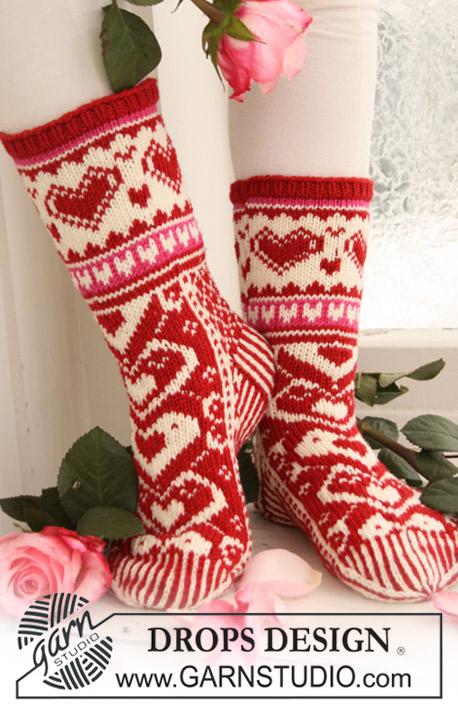 |
 |
|||||||||
Knitted socks in DROPS Merino Extra Fine. Socks are worked with Nordic pattern with heart. Size 5 - 10½. Theme: Christmas
DROPS Extra 0-611 |
||||||||||
|
PATTERN: Diagram M.1 to M.6. Diagram shows the pattern from RS. The entire pattern is worked in stockinette st. HEEL DECREASES: Row 1 (= RS): Work row until 7-8-8 sts remain, slip next st as if to K, K1, psso, turn piece. Row 2 (= WS): Work row until 7-8-8 sts remain, slip next st as if to P, P1, psso, turn piece. Row 3 (= RS): Work row until 6-7-7 sts remain, slip next st as if to K, K1, psso, turn piece. Row 4 (= WS): Work row until 6-7-7 sts remain, slip next st as if to P, P1, psso, turn piece. Continue dec like this with 1 less st before each dec until there are 9-11-11 sts on needle. -------------------------------------------------------- -------------------------------------------------------- SOCK: Worked in the round on double pointed needles. Cast on 64-64-64 sts on double pointed needles size 3 mm / US 2½ with red. K 1 round and work 4 rounds rib K1/P1. Change to double pointed needles size 3.5 mm / US 4 and continue in M.1 (= 16 sts) on all sts, AT THE SAME TIME on last row of M.1 dec 4-0-0 sts evenly = 60-64-64 sts. Continue in M.2 (= 4 sts) on all sts, AT THE SAME TIME on last row of M.2 dec 4-4-4 sts evenly = 56-60-60 sts. K 1 round with off-white, and continue as follows: M.3 (= 35 sts), M.4A (= 4 sts) on the next 20-24-24 sts, finish with M.4B (= 1 st). Work a total of 4 vertical repeats of M.4 and now slip sts on M.3 (= 35 sts) on a stitch holder = 21-25-25 sts left for heel. Work M.5 on these sts for 5-5.5-6 cm / 2"-2¼"-2⅜", and insert a marker in piece. Now work HEEL DECREASES – see above. After heel dec pick up 12-14-14 sts each side of heel and slip the 35 sts from stitch holder back on needle = 68-74-74 sts. Continue in M.3 on the 35 sts on upper foot and M.5 on the remaining sts under foot, AT THE SAME TIME dec each side of sts on upper foot as follows: K tog the 2 sts before M.3 and K tog into back of loop the 2 sts after M.3. Repeat the dec on every other row a total of 5 times = 58-64-64 sts. Continue in M.3 and M.5. After 2 vertical repeats of M.3 continue as follows: M.6 (= 3 sts), M.5 on the next 29 sts, M.6, M.5 on the next 23-29-29 sts. Continue like this until piece measures 17-18-21 cm / 6¾"-7"-8¼" from marker on heel (= 5-6-6 cm / 2"-2⅜"-2⅜" remain). Now dec for toes each side of the middle st in M.6 each side. Dec as follows before the middle st: K2 tog with off-white. Dec as follows after the middle st: slip first st as if to K, K1, psso. Dec on every round a total of 9-10-10 times = 22-24-24 sts left. K2 tog all the way round, cut the thread, pull it through remaining sts and fasten. |
||||||||||
Diagram explanations |
||||||||||
|
||||||||||
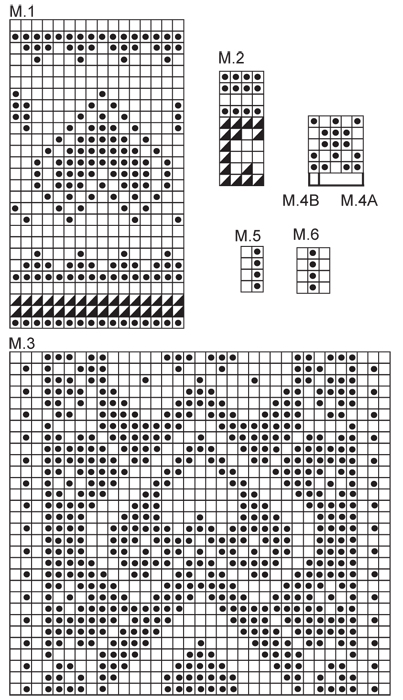
|
||||||||||
Have you finished this pattern?Tag your pictures with #dropspattern #headoverheelsforyousocks or submit them to the #dropsfan gallery. Do you need help with this pattern?You'll find 18 tutorial videos, a Comments/Questions area and more by visiting the pattern on garnstudio.com. © 1982-2025 DROPS Design A/S. We reserve all rights. This document, including all its sub-sections, has copyrights. Read more about what you can do with our patterns at the bottom of each pattern on our site. |
||||||||||







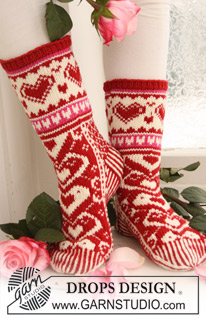
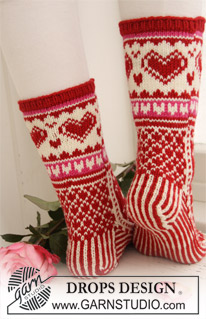




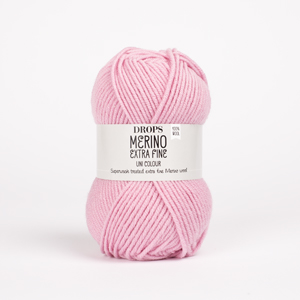
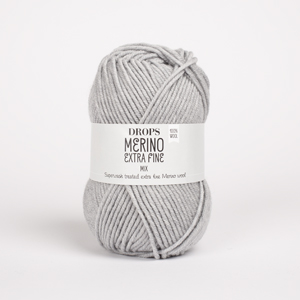

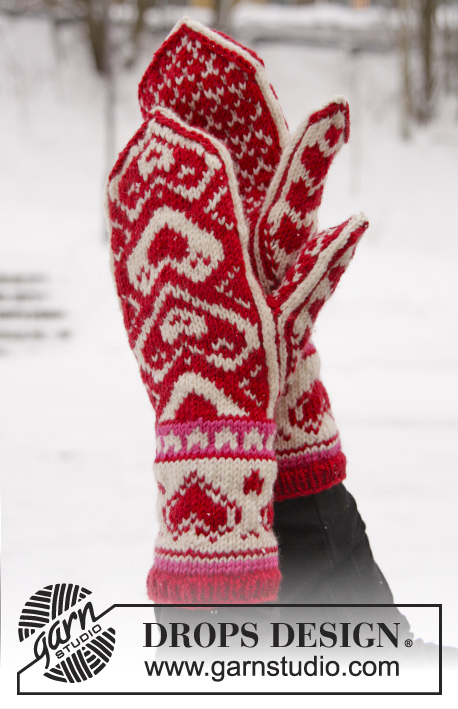





































Post a comment to pattern DROPS Extra 0-611
We would love to hear what you have to say about this pattern!
If you want to leave a question, please make sure you select the correct category in the form below, to speed up the answering process. Required fields are marked *.